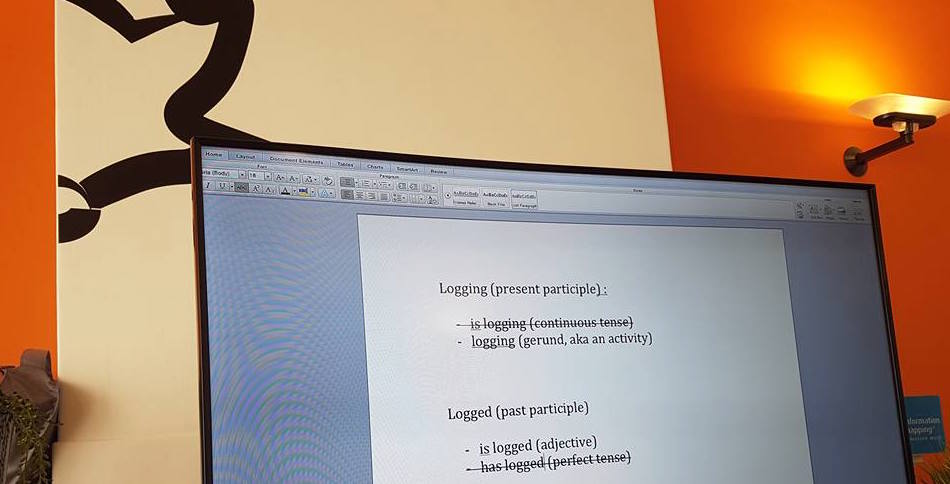March 2019
Quick Facts
Dates: 22 & 23 January 2020
Plan later:
- 6 & 7 February 2020
- 24 & 25 February 2020.
Time: 09:00 to 17:00 Eastern Time
Length of training: 2 days
Course fee: 799 EUR**
Course registration ends one week before training commences.
**Course fee includes exercises, learning aids, certificate of completion, and 90-day post-training support.
Summary
Simplified Technical English (STE) is a controlled language that is used to write technical manuals in such a way that they can be more easily understood by an international audience. STE helps to make translations cheaper and more accurate. Often a formal requirement for aircraft and defence maintenance documentation, STE can easily be adapted to all technical industries and beyond. Ms. Shumin Chen will teach participants how to correctly and effectively use STE in practice. She will also address some of the mistakes commonly found in technical writing and the frequently incorrect use of common STE writing rules.
I’ve found all the rules introduced in this workshop equally valuable and applicable in my field of work. The ASD-STE100 Specification is very useful for searching examples and finding STE compliant alternatives. It was also great that we has such a large number of practical exercises. Personally, it would be more valuable to have more context available. This helps us judge how to apply STE optimally. Thank you Shumin! Your workshop was concise, clear, and pragmatic. I also liked the occasional humour!
Diane Goodrick, Information Architect/ Author Trainer, Schindler Group.
Course outline*
- Day 1: Classroom Training
- Practical overview of Simplified Technical English
- How STE helps both native & non-native speakers of English
- Benefits of adopting the STE international writing standard
- Writing rules and how to apply them in practice
- How to use the general vocabulary.
- Approved and non-approved words discussion and the rationale behind.
- Day 2: Application, Review, & Exercises
- How to deal with industry-specific terminology
- How to use STE for various documentation types
- How to implement STE with minimal disruption to on-going production and existing documentation
- Practical workshop session for applying STE rules to your own documents
- Review, edit, and discuss participants’ own documents to reinforce learning
- Classroom presentation of own documents.
* Shufrans also offers customised ASD-STE100 training solutions tailored to meet your specific requirements. These courses are normally provided at the customer’s premises.
I will definitely recommend this training to writers of many fields, especially technical fields. The material, presentation, and instructor are fantastic. I learned a lot about ASD-STE. Even though I’ve been using this writing convention for almost eight years, formal training brought much clarity and comprehension that I had not previously realized. I now know that an aptitude for writing and a copy of the STE rules is a good start, but not enough. This course takes your understanding to a professional level. Lauren Gelli, Senior Technical Writer, Aerotech Inc.
Who should attend?
- Compliance managers
- CIO, COO, CTO
- Customer support managers
- Documentation managers
- Editors
- Engineering managers
- Engineers and SMEs who create documentation
- Graphics specialists
- ILS managers
- Maintenance managers
- Operation managers
- Product managers
- Project managers
- Quality managers
- Software research engineers
- Technical illustrators
- Technical writers
- Translation managers
- Translators.
What training outcomes to expect?
Our interactive training, exercises and workshop, will teach participants to standardise content to:
- Author more efficiently
- Communicate more effectively with a global audience
- Improve operational safety
- Reduce AOG / downtime
- Facilitate modular writing and reuse
- Facilitate teamwork
- Facilitate translation
- Maximise consistency
- Optimise product lifecycle support
- Reduce the cost of creating and maintaining technical publications.
Trainer’s qualifications
Ms. Shumin Chen, principal trainer & consultant at Shufrans TechDocs received her professional on-the-job training in the field of STE under the tutelage of Dr Frans Wijma, a linguist and documentation expert. Together as an experienced global team, they provided their combined knowledge and dedication to benefit customers worldwide. To date, they have provided training and consultancy services to over 180 companies. Shufrans TechDocs is the only company with such vast experience in providing certified STE training.
Shumin has supported various companies with their STE and other documentation needs, based on standards where possible. Although STE was developed for the aerospace industry, more specifically for aircraft maintenance documentation, Shumin found that it made a lot of sense to apply the same principles to other industries and types of documents as well. Few -if any- changes to the specification are necessary to adapt STE to industries ranging from machinery to IT, automotive to medical equipment.







